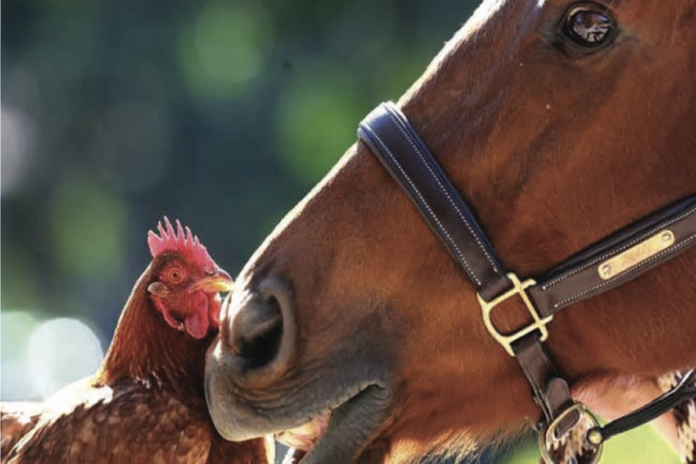A GROWING EGGISTANCE
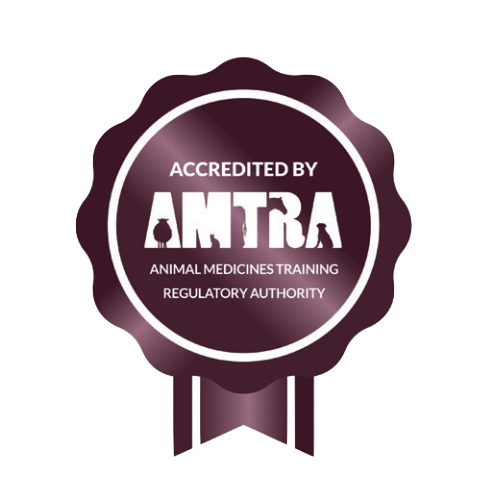
By Griselda Beaumont BSc (Hons) ANutr (Animal)
AMTRA is required by the Veterinary Medicines Regulations to ensure its RAMAs/SQPs undertake CPD. All RAMAs/SQPs must earn a certain number of CPD points in a given period of time in order to retain their qualification. RAMAs/SQPs who read this feature and submit correct answers to the questions below will receive two CPD points. For more about AMTRA and becoming a RAMA/SQP, visit www.amtra.org.uk
The experience with COVID-19 has led to a rise in individuals keeping poultry. Today there are over 1.2 million domestic chickens in the UK - up from 400,000 in 20191 - making them the fourth most popular pet.
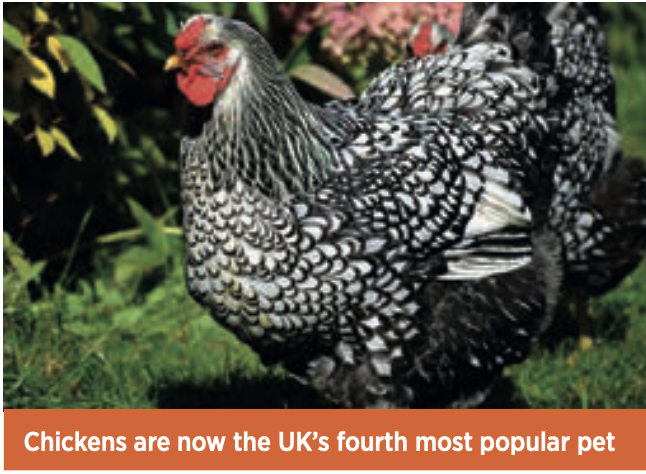
There is a clear cross-over with our equine customers which means having a poultry offering in retail will help provide a more rounded service to your customers.
THE COOP
Eating eggs are a popular reason for keeping chickens, an excellent source of protein and plenty of vitamins and minerals, supporting our immunity and supplying the body with vital nutrients. Droppings are high in nitrogen and a fertiliser for gardens but they are also a proven asset for biogas production2, supporting renewable energy.
For those keeping less than 50 chickens, it is legal to offer eggs at the farm gate; but check with your supplier if you use or may use Flubenvet 1% Medicated Premixture as that is permitted for use in chickens producing eggs for domestic consumption only.
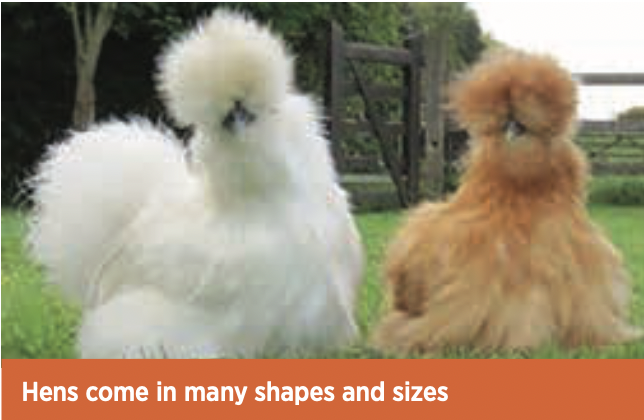
For those keeping over 50, it is a requirement to register with APHA (Animal and Plant Health Agency) covering England, Wales and Scotland, and, take out a CPH (county parish holding number)3. If the intention is to sell into shops, the business has to register as an egg packing centre and the regulation continues.
An ‘Egg Inspector’ visits sites regularly to examine eggs, premises and records, ensuring the birds’ welfare and eggs are fit for human consumption. Salmonella, Listeria, Campylobacter and E. Coli are four commonly known zoonotic diseases4 that primarily manifest themselves in the gastrointestinal tract (GI) and, as with most species, a healthy GI tract results in a healthy system.
EGGS-PLORING THE INTESTINAL TRACT
Observe a chicken eating, and they peck at food which disappears into the beak. Without the presence of teeth, the beak is used to break the food into smaller pieces making it ready to swallow.
As an omnivore, chickens eat layers pellets, mixed corn as well as meat such as worms and plants like grass.
The pecked up food travels down the oesophagus (gullet) to the crop, a muscular bag at the bottom of the neck which can store food for around 12 hours. The stomach (gizzard) allows food to trickle in from the crop and mixes digestive enzymes along with grit to grind the foodstuff into a digestible size.
Once ground, the foodstuff continues to the small intestine where key nutrients can be absorbed. Undigested foodstuff continues through the GI tract, stopping in the ceca where bacteria takes action on anything that remains undigested.
The large intestine absorbs water and dries undigested food before meeting at the cloaca crossroads which is capable of eliminating the waste material. This material is a mixture of faeces (brown) and urine (white matter), any variations on this colour are abnormal, for example, yellow can be a common disparity which could be a sign of parasites such as Coccidiosis, a well-known poultry parasite which attacks the gut.
DINNER EGG-SPECTATIONS
Nutritional demands increase for a productive egg layer, eggs are high in protein and need the right balance of vitamins and minerals to support quality and production.
Traditional ‘layers pellets/mash’ are suitable for hens around 18-20 weeks old – this is the time of their ‘point of lay’ when they have high protein and energy requirements. Mixed corn is low in protein but high in energy, great to support heat production or should the individual require more condition, it does not contain the essential vitamins and minerals required to balance the diet and promote efficient laying.
‘Growers pellets’ help optimum growth from 6 weeks old, with a low protein content to focus on correct growth without succumbing to fat stores. As soon as chicks hatch, they require ‘Chick Crumbs’ which are small particles to make it easy for the chick to peck up and digest to encourage natural growth.
Most pick up grit naturally but specific forms can be introduced to chicks early in order to establish the gizzard’s natural function. All chickens should be offered a good source of grit throughout their life to help retain healthy digestive function and prevent the individual suffering from ‘Sour Crop’.
DON’T EGG-NORE THE SIGNS
Offering garden and kitchen scraps results in variable nutritional values; it is advised to stick to leafy vegetables and avoid offerings such as rhubarb leaves, these can cause liver damage.
When the crop is full, it will need to empty before taking in any more feed, it is important that consumption of the right feed fully supplies the system for the next 12 hours. In many cases the diet lacks in vital nutrients. This is when poultry keepers can turn to the water supply to influence the right dietary intake.
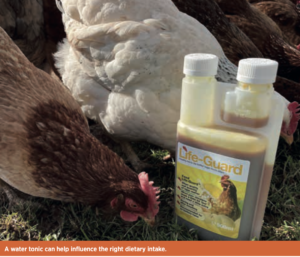
WATER OF LIFE
When chickens are under stress or suffering from a nutritional deficiency, drinking rate increases. It should be around 500ml/day. A quality water tonic fortified with nutrients provides balance to the diet without having to monitor the individual’s feed intake. The right tonic will supply:
Digestive support
• Pre-biotics support growth of bacterial populations and maximise the rate of absorption
Respiratory health
• Address the 9 air sacs that need to retain elasticity for clear passage and protection as they are susceptible to threat
Skeletal strength
• Weak bone strength and joint stress may lead to immobility; retaining skeletal strength will help to sustain the vital organs within and promote mobility
Egg Production and Quality
- Strong shell quality and healthy yolk colour
- Promote production and quality offering targeted nutrients
Moulting
• Renewing feather results in vast nutrient requirements, this usually ceases the laying process. Supplying the right nutrients to support the individual throughout the moult can ensure nutrient stores are not depleted and body systems remain strong
Toxin stress
• Antioxidants help to support the natural defences against harm from free radicals
Fertility / Reproduction
• Heat stress and fat deposits can lead to sub-fertility, look for fertility enhancing ingredients to support healthy reproduction
Targeting the water supply helps to fully restore the individual even through times of stress, when food intake may be reduced. With so many environmental threats influencing the health of chickens, topping up with the right water tonic provides a life- guard.
References
- Statista, 2022.
- Oyewole, O.A., 2010. Biogas production from chicken droppings. Science World Journal, 5(4).
- https://www.gov.uk/government/publications/poultry-including- game-birds-registration-rules-and-forms
- Transmitted from species to species

ABOUT ETN’S RAMA/SQP FEATURES
ETN’s series of CPD features helps RAMAs (Registered Animal Medicines Advisors/SQPs) earn the CPD (continuing professional development) points they need. The features are accredited by AMTRA, and highlight some of the most important subject areas for RAMAs/ SQPs specialising in equine and companion animal medicine.
AMTRA is required by the Veterinary Medicines Regulations to ensure its RAMAs/SQPs undertake CPD. All RAMAs/SQPs must earn a certain number of CPD points in a given period of time in order to retain their qualification. RAMAs/SQPs who read this feature and submit correct answers to the questions below will receive two CPD points. For more about AMTRA and becoming a RAMA/SQP, visit www.amtra.org.uk










